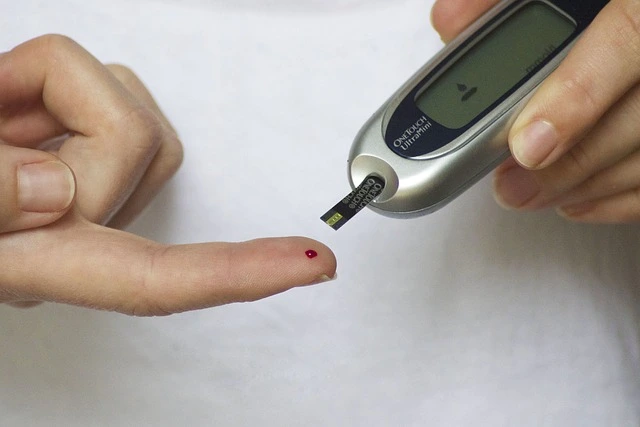When did Diabetes start?
There are three main types of diabetes mellitus: Type 1, Type 2, and gestational diabetes. In Type 1 diabetes, insulin is completely absent. In Type 2 diabetes, either the production of insulin decreases, or the body does not respond adequately to the insulin that is produced. Gestational diabetes develops in pregnant women who have never had diabetes before.
We will discuss the first two types of diabetes, which are the most common: Type 1 and Type 2 diabetes.
How can you tell if you have diabetes?
From this point forward, I will refer to diabetes mellitus simply as diabetes. The earliest symptoms arise from higher-than-normal levels of glucose in the blood. Glucose is a type of sugar found in your blood, and both Type 1 and Type 2 diabetes share some common warning signs. However, these signs may be mild and go unnoticed in Type 2 diabetes, whereas the symptoms of Type 1 diabetes typically occur early and are more severe.

Let’s take a look at the early signs of diabetes:
- Hunger and Fatigue: The food we eat is converted into glucose, which our cells utilize for energy. Cells need insulin to take in glucose. If the body produces insufficient insulin, or if the cells are resistant to insulin, glucose cannot enter the cells, resulting in low energy levels. Consequently, you may feel hungrier and more fatigued than normal.
- Frequent Urination and Increased Thirst: A person with diabetes may need to urinate more frequently than average. Normally, the body reabsorbs glucose as it passes through the kidneys. However, when blood sugar levels rise, the kidneys may struggle to reabsorb all the glucose, leading to increased urine production, which in turn makes the body lose more fluid. This causes increased thirst, leading to the consumption of more water and further frequent urination.
- Dry Mouth and Itchy Skin: Increased fluid loss through urination can lead to dehydration, resulting in a dry mouth and dry skin, which can become itchy.
- Blurred Vision: Fluctuating fluid levels in the body can cause the eye’s lens to swell, leading to changes in shape that impair the eye’s ability to focus, resulting in blurred vision.
Now let’s look at other symptoms of diabetes that appear after glucose levels have been high for an extended period:
- Fungal or Yeast Infections: These infections can occur in both men and women with diabetes. The excess glucose in the body promotes fungal growth, which can develop in warm, moist areas of the skin, such as between the fingers and toes, under the breasts, and in the genital region.
- Slow Healing Sores or Cuts: Over time, high blood sugar can negatively affect blood flow and cause nerve damage, making it difficult for the body to heal wounds properly.
- Pain or Numbness in Feet or Legs: This pain and numbness result from nerve damage caused by high blood sugar levels.
Knowing the signs and symptoms of diabetes can help you detect the condition early and seek medical advice.
One major sign is high blood glucose levels. Another is unplanned weight loss; if your body cannot obtain energy from the food you eat, it begins to burn muscle and fat for energy, leading to unwanted weight loss.
Nausea and vomiting can also occur; when the body burns fat, it produces ketones. These ketones can build up in the bloodstream to dangerous levels, causing you to feel sick. The accumulation of ketones is responsible for the feelings of nausea and vomiting.
Diabetes can lead to several complications, and the following signs may serve as warnings:
- Slow-healing sores or cuts
- Itchy skin, often around the vaginal or groin area
- Frequent yeast infections (or fungal infections)
- Recent weight loss
- Velvety, dark skin changes in the neck, armpits, and groin area, known as acanthosis nigricans
- Numbness and tingling in the hands and feet
- Decreased vision
- Impotence or erectile dysfunction
A serious complication of prolonged high blood glucose is diabetic coma, which can even lead to death. This condition can occur with either type of diabetes but is more common in type 2 diabetes. It happens when blood sugar levels get too high, causing severe dehydration.
These signs indicate a potential diabetic coma.
- Blood sugar above 600 milligrams per deciliter
- Dry, parched mouth
- Extreme thirst
- Warm, dry skin that does not sweat
- Possible high fever
- Sleepiness or confusion
- Vision loss
- Hallucinations
- Weakness on one side of the body
Note: When should you consult a doctor?
If you are older than 45 or have other risk factors for diabetes, you should get tested. Spotting the condition early can help you avoid heart problems, nerve damage, and other complications.
As a general rule, consult your doctor if you feel very sick, weak, extremely thirsty if you are urinating a lot, have a severe stomach ache, or experience deep, rapid breathing.
How to Stop Prediabetes
How can you prevent pre-diabetes from progressing into diabetes? It’s not that difficult once you understand the underlying mechanisms involved. Before reaching the pre-diabetic state, there’s a condition called insulin resistance that you need to know about. Insulin resistance occurs when your body becomes less responsive to insulin due to an excessive carbohydrate intake.

Once diagnosed, doctors typically start managing blood sugar levels with medications. However, they often overlook dietary consumption of glucose, sugar, and refined carbohydrates. While you might be referred to a dietitian who suggests eliminating refined carbs, total carbohydrate intake, and sugars aren’t thoroughly addressed—it’s quite fascinating.
Instead, the focus is on medication management, which can lead to a cycle of medication increase due to concerns about low blood sugar levels. To counter this, you might be advised to consume glucose tablets or candy to raise your blood sugar, as the side effects of the medications can cause it to drop too low.
Why not fix the diet instead?
It seems so obvious to me that reducing carbohydrates would be the first step. The initial strategy should be to replace carbs with fats and proteins to alleviate the pressure on the pancreas. The beta cells in the pancreas produce insulin in response to carbohydrate intake; by cutting out carbs, you allow these cells to rest. Additionally, adopting an intermittent fasting approach and not eating frequently can be beneficial.
If you combine these two actions for just three days, you’ll likely find that it becomes much easier; your appetite will diminish, and you’ll start feeling better almost immediately. This can provide relief to the pancreas, leading to a reduction in blood sugar levels and a decreased need for medication.
It’s important to consult with your doctor to make any necessary adjustments, but consider this: you could live longer by taking fewer medications if your blood sugar levels are normalized. No study shows you’ll live longer or have fewer problems merely because you take medication to manage your blood sugar. The medication doesn’t eliminate the sugar; it just moves it from one area of the body, like the blood, to another, such as the liver or other tissues. It merely manages the sugar rather than correcting the problem.
Consume Anti-Oxidant Foods
You should also focus on consuming high-quality antioxidant foods, particularly low-starch vegetables. These antioxidants can help protect you against the collateral damage caused by elevated sugar levels. Even if you don’t change the amount of sugar in your diet, by eating healthier, you can minimize complications and side effects associated with diabetes.




